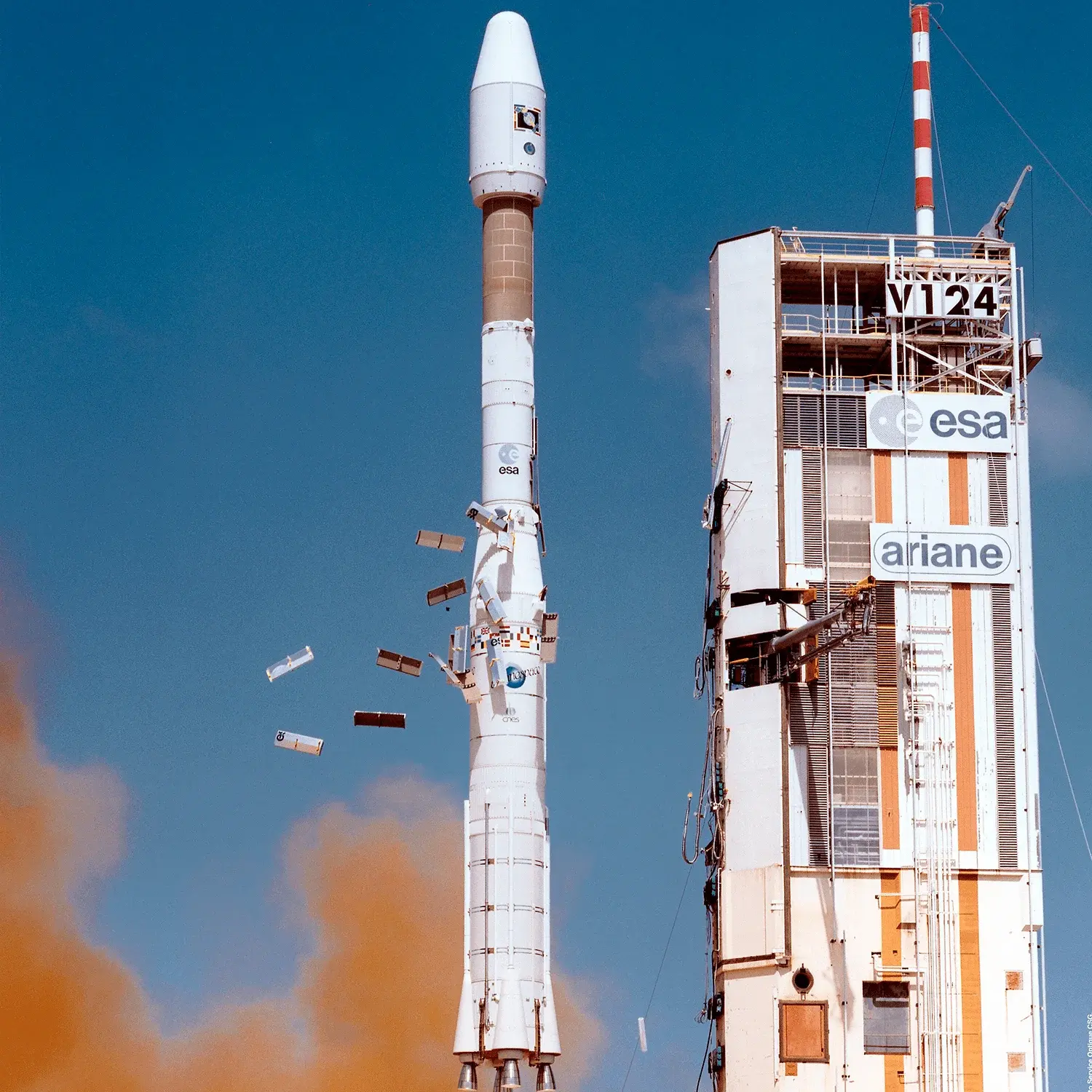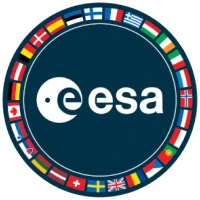SPOT-2, PACSAT & Rideshares
Launch Success
Liftoff Time (GMT)
01:35:00
Monday January 22, 1990
Mission Details
Launch Notes
First flight of Ariane 40. Flight V35.
SPOT-2
SPOT (French: Satellite Pour l’Observation de la Terre) is a commercial high-resolution optical imaging Earth observation satellite system. It is run by Spot Image, based in Toulouse, France. It has been designed to improve the knowledge and management of the Earth by exploring the Earth's resources, detecting and forecasting phenomena involving climatology and oceanography, and monitoring human activities and natural phenomena. The SPOT system includes a series of satellites and ground control resources for satellite control and programming, image production, and distribution.
Sun-Synchronous Orbit
1 Payload
1,875 kilograms
UoSat 3 & 4
UoSAT-3 and UoSAT-4 (University of Surrey Satellite) were launched from Kourou on the Ariane flight V35 ASAP on the 21st of January 1990. The satellites were placed into a 780 km, 98-degree sun-synchronous orbit. The primary payload carried by UoSAT-3 is a digital Store and Forward communications transponder supporting multiple access from hundreds of portable ground stations. It is particularly suited to communications in remote or disaster-stricken areas. Two experimental payloads are included to monitor the radiation environment experienced by the satellite in Low Earth Orbit (LEO), measuring cosmic particles, and total radiation dose. The satellite employs highly efficient Gallium Arsenide solar cell arrays in collaboration with Mitsubishi (MELCO-Japan), and inexpensive Nickel-Cadmium rechargeable cells in collaboration with AMSAT-NA in Canada. The payloads are sponsored by the Royal Aerospace Establishment (UK), VITA (USA-DoE), AMSAT-UK, and the University of Surrey through Surrey Satellite Technology Ltd.
Sun-Synchronous Orbit
2 Payloads
90 kilograms
LUSAT
Coordinated by AMSAT Argentina, the LUSAT (named after the LU amateur designation for Argentina) microsatellite was launched on the first ARIANE ASAP flight. It carries Digital Store and Forward packet communications transponder similar to AO-16. Uplink frequencies are 145.84, 145.86, 145.88, and 145.90 MHz FM 1200 bps Manchester FSK. The downlink frequency and protocol is AX.25 at 437.125 MHz SSB 1200 bps RC-BPSK. It is box-shaped with dimensions of 213 × 230 × 230 mm, with four solar panels and a weight of 13.76 kg.
Sun-Synchronous Orbit
1 Payload
15 kilograms
Webersat
This 16 kg amateur radio micro-satellite was built by Weber State University's Center for Aerospace Technology (CAST). It has a full-colour CCD camera, Digital Store and Forward packet communication transponder, spectrometer, and particle impact detector. It is box-shaped with dimensions of 317 × 230 × 230 mm, with four solar panels and a weight of 16.03 kg. The downlink frequency is 437.104 MHz SSB 1200 Baud PSK AX.25 It also carries a CCD NTSC video recorder, digitised to provide 209 by 274 km coverage snapshots using a mechanical shutter. A piezoelectric Particle impact detector measures the micrometeorite environment. A light spectrometer employing an NEC linear CCD measures the spectrum of sunlight reflected from the atmosphere. An L-band video uplink receiver allows NTSC video uplink to be digitised. The satellite employs a V40 processor running at 9.83 MHz, with 8MBytes of RAM. The ADCS system comprises a horizon sensor using two photodiodes with a 22° field of view, a fluxgate magnetometer, permanent magnets, hysteresis coils, and black/white painted antennas for spin control similar to a "photometer".
Sun-Synchronous Orbit
1 Payload
13 kilograms
DOVE
DOVE (Digital Orbiting Voice Encoder) or DO 17 (DOVE OSCAR) was an AMSAT-Brazil (BRAMSAT) amateur microsatellite. The project was initialized by radio amateur Junior Torres de Castro. It has a Digital Orbiting Voice Encoder (DOVE), designed to provide synthesised voice messages of telemetry for educational institutions. It is box-shaped with dimensions of 213 × 230 × 230 mm, with solar panels on the faces of the cube, and a weight of 12.92 kg.
Sun-Synchronous Orbit
1 Payload
13 kilograms
PACSAT
PACSAT (Packet Radio Satellite) was an AMSAT microsatellite. It is dedicated to amateur digital Store and Forward packet data communications at 1200 bps. It is box-shaped with dimensions of 213 × 230 × 230 mm, with four solar panels, and a weight of 13.34 kg. Uplink frequencies are 145.90, 145.92, 145.94, and 145.86 MHz FM 1200 bps Manchester FSK, and downlink frequencies are 437.0513 MHz SSB, 1200 bps RC-BPSK 1200 Baud PSK. A beacon is also carried at 2401.1428 MHz. It was reported to be operational in March 1999.
Sun-Synchronous Orbit
1 Payload
12 kilograms
Launch Site
Stats
Ariane 4
7th
Mission
1st
Mission of 1990
European Space Agency
26th
Mission
1st
Mission of 1990
1990
5th
Orbital launch attempt

